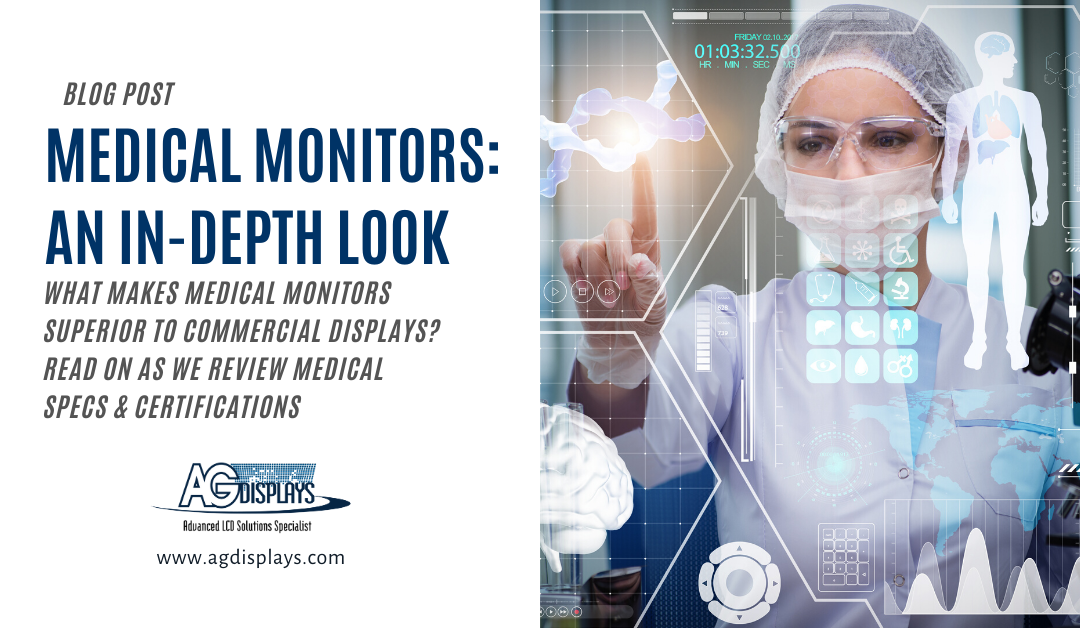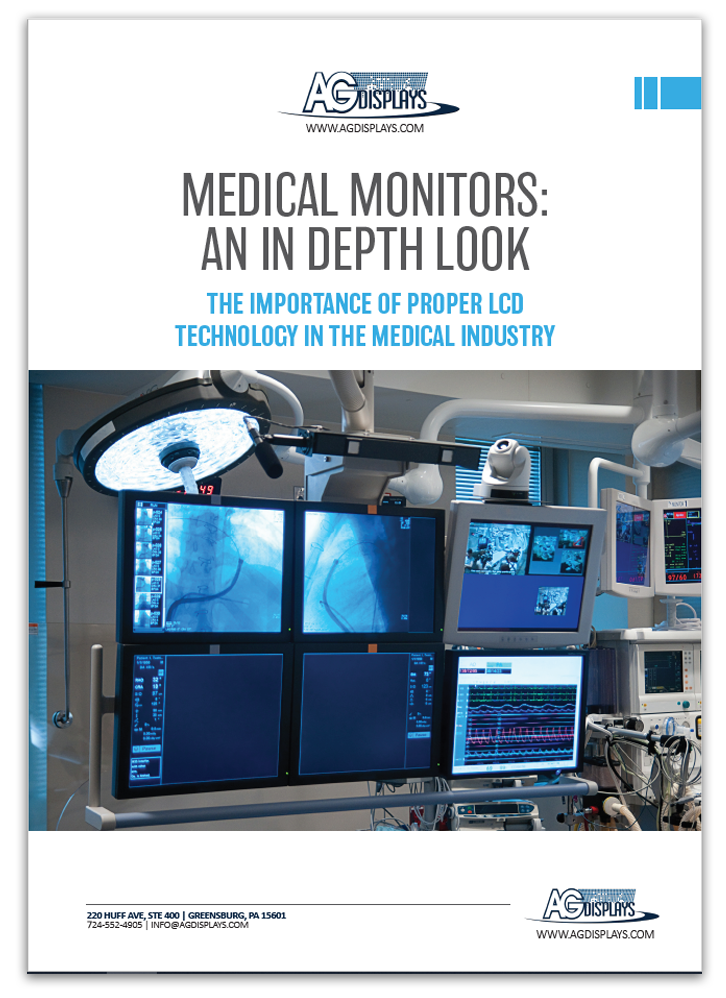With the ever-growing concerns and pandemic potential of new and deadly diseases, it is important to consider the effects of proper equipment in the medical industry. One such piece of equipment, the medical grade monitor, is a specialty enhanced display that meets not only strict certification requirements, but also improves the design over consumer grade displays to promote safety, cleanliness, and accurate image reproduction. There are a few major advantages of medical displays vs consumer level models, which when combined, offer a much greater level of protection and accuracy when compared to store-bought displays.
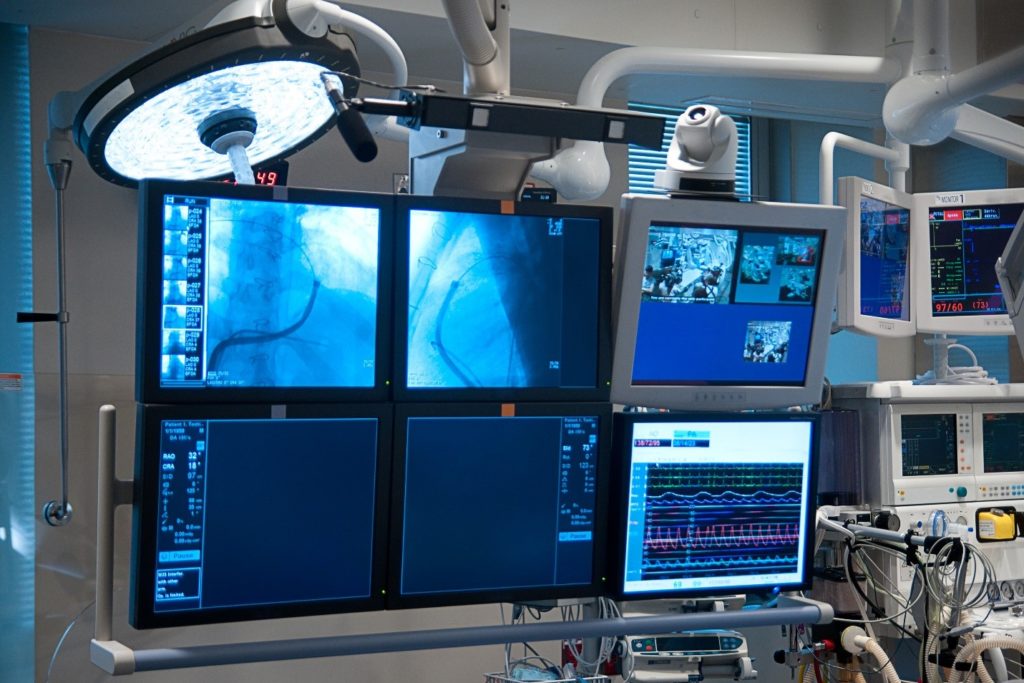
Certification:
All electronic medical equipment, including clinical displays, are subject to the international standard IEC 60601-1. This standard ensures the basic safety and performance of any electronic medical device used either by trained healthcare workers, or by patients, whether in a clinical setting, in their home, or elsewhere. One of defining features of this certification is that a electronic medical device will not emit electromagnetic static – which could interfere with other devices and potentially injure workers or patients. Because many non-display related devices such as defibrillators, ventilators, heart monitors etc. come into direct contact with the patient, it is important that nearby medical diagnostic displays meet IEC 60601-1 as to not interfere with such devices.
DICOM:
DICOM or “Digital Imaging and Communications in Medicine” is another international standard that medical grade displays should adhere. DICOM is the standard that applies to all medical images, whether being viewed directly on a monitor, stored and saved on a PC workstation, or printed to be viewed via hardcopy. It even includes specifications for the various image capturing devices such as those used in the fields of radiology, cardiology, pathology, dentistry, ophthalmology and surgery. For medical diagnostic displays, the standard dictates specific greyscale luminance calibrations for viewing medical images, which can be measured and achieved via an optical measuring device such as a SpectriLight calibration tool. DICOM calibrated displays are proven to show consistent high-quality greyscale images such as x-rays, with exceptional accuracy and high precision.
Sanitation:
Medical grade monitors are specifically built with safety and cleanliness at the forefront of design. Often, these displays are built with a flat panel design, with minimal nooks and crannies where dirt or bacteria can hide. Most medical displays are designated with an ingress protection rating to ensure that their casings are dirt, dust, and waterproof, meaning they can be sprayed and cleaned with soap and water. Often, these same displays are also treated with an antibacterial and hydrophobic coating, which makes them resistant to mold, viruses and bacteria, and able to withstand cleaning with more astringent cleaners and sanitizers without damage.
Resolution:
High resolution medical displays let experienced professionals view images in precise detail and make diagnoses with greater accuracy. Current medical grade displays offer resolutions up to 4K (3840 x 2160 pixels) and occasionally even include 3D imaging. Higher resolution displays allow for fine details to become apparent and can be viewed without needing to zoom in at the expense of the overall image. Coinciding with resolution, having a high PPI (Pixels Per Inch) gives a 4K medical monitor sharper images when viewed on a large size display. Having a large, high resolution, PPI dense medical display gives the clearest possible view for the medical professionals viewing the device. 3D capable medical displays give further fidelity to images produced by 3D imaging medical equipment, such as MRIs and CT scans. Viewing these types of pictures on a 3D display can help to eliminate the obfuscation that can occur by rendering and flattening a 3D image on 2D display.
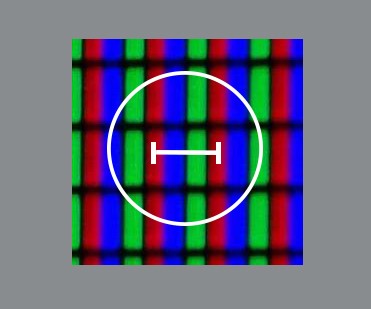
High-brightness:
The overhead lights inside of medical facilities such as an operating room are often extremely white and extra bright. Because of this, glare can become an issue if normal consumer type displays are used. Medical grade monitors are designed with high-bright LED backlights, often exceeding 1000 cd/m² (a typical consumer display like a TV often maxes out at 500 cd/m²). Having a high-bright medical display lets the displayed images cut through the glare of surrounding ambient light. A high-bright medical display, if properly calibrated to DICOM calibration standards, will emit a wider spectrum of greyscales, resulting in an even higher image quality.
Uniformity:
A uniform display is integral to the accurate diagnosis of an image by a medical professional. If a display suffers from dark spots, dead pixels, or mura, it can cause anomalies in the image and confusion to the viewer. The AAPM or “The American Association of Physicist in Medicine” has set forth a standard and evaluating procedure to ensure that a medical display has no more 30% luminance variation across a 9-point inspection, using a specially calibrated test pattern. While anything exceeding a 30% percent uniformity variation should be considered defective, AAPM recommends that a medical display exhibiting a variance of more than 15% should be reviewed to ensure acceptable performance in a real-world setting.
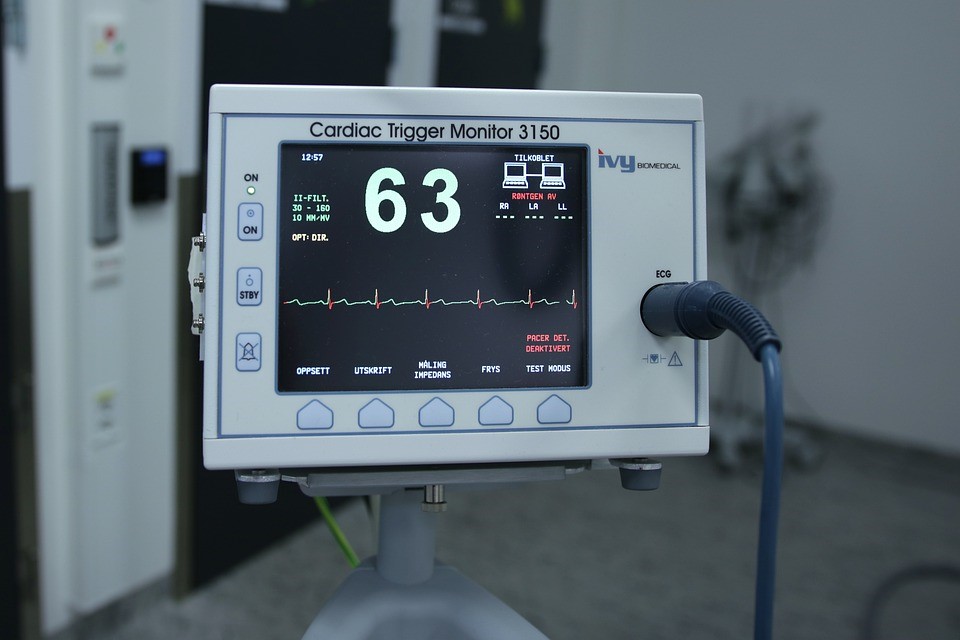
Isolated IOs:
Medical grade displays often feature isolated and easily accessible display inputs and outputs, such as HDMI, USB, and DisplayPort. This allows them to quickly and easily accept a connection with external hardware such as medical PCs, other diagnostic monitors, peripherals, or other smart medical devices. Medical displays may also have external brightness controls and unique programmable function keys, which can be designated for an application specific operation.
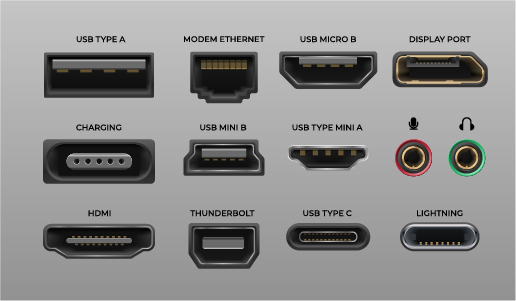
Lifecycles:
Consumer type displays are often remodeled, updated, or discontinued after only a few years, which often leads to shorter than expected lifecycles and limited warranties. Medical grade displays, on the other hand, are more often future-proofed as much as possible, and are promoted to have lifecycles of 10 years or more. This means that purchasers can integrate displays into their existing medical systems without fear of needing to replace or upgrade the display again for many years. This lets customers become familiar with their display and increase work efficiency, while improving image evaluation accuracy. Warranties provided for medical displays are more robust than comparable consumer warranties, and cover full repair service of the display. The elongated lifecycles and extended warranties given to medical displays help to inspire confidence in the display and lower the overall cost of ownership.
Image Consistency:
In the medical field, clear images are important to evaluation and diagnoses performed by medical professionals. In standard LCD displays, imaging specifications like brightness and contrast ratio may degrade over a period of time. With cutting edge LED backlighting systems, brightness degredation in medical displays is minimum. Medical grade contrast ratio specs stay upwards of 1000:1 while standard display contrast ratio can linger around 600:1 and degredation is more severe.
Conclusion:
The total defining features of a medical grade display are what make them a unique and advanced piece of equipment when compared to commercial and off-the-shelf monitors. Features such as: strict certifications, special calibrations, sanitization and ingress protection, ease of access and compatibility, and high brightness and contrast combine to create a type of monitor that has been perfected for use in life-saving situations. Whether being used by healthcare professionals, or by patients, medical monitors are ubiquitous in the healthcare industry. As imaging techniques only continue to advance, so will the capabilities of the monitors needed to display them. To learn more about medical displays, or to see how AGDisplays can help your medical monitor needs, please visit our website at www.agdisplays.com.
Like the content of this post? Take it with you!
Download the pdf of this post now: click here

